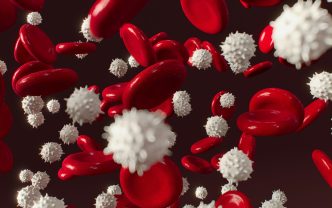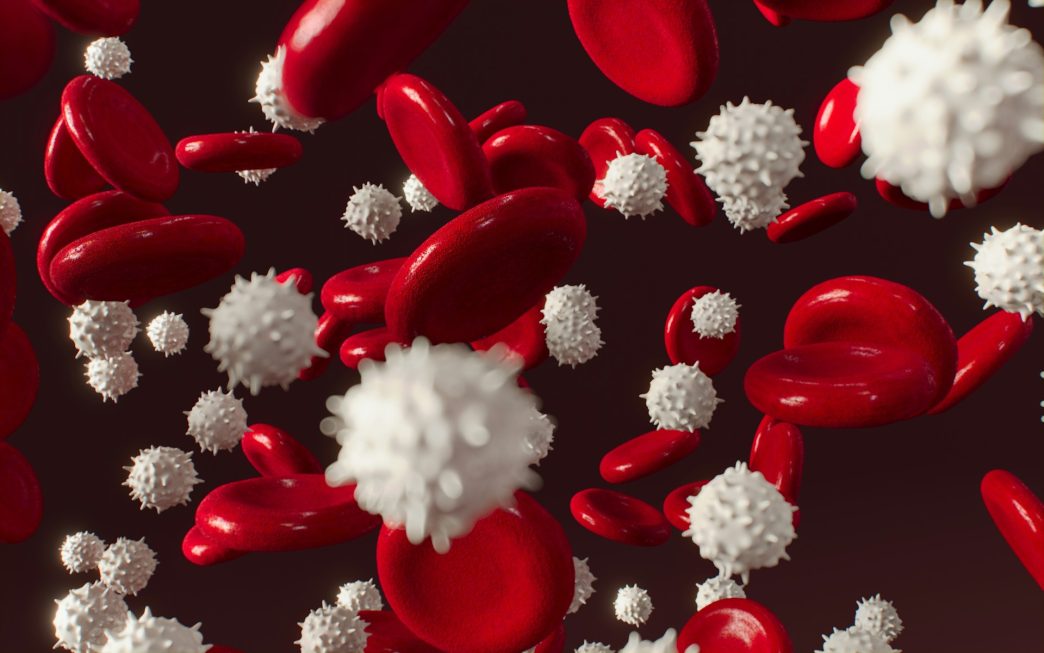The Science Behind Plasma: What Makes It So Special?
Plasma is the liquid component of blood, comprising about 55% of its total volume. This pale yellow fluid is rich in proteins, electrolytes, hormones, and nutrients. The unique composition of plasma, filled with essential proteins like albumin, immunoglobulins, and clotting factors, plays an integral role in maintaining homeostasis in the human body. Plasma acts as a transport medium, carrying oxygen, nutrients, and antibodies to cells throughout the body while also helping to regulate blood pressure and volume. Its importance cannot be overstated, as it helps in blood clotting, immune system functioning, and fluid balance. For patients with various medical conditions, the therapeutic properties of plasma can be lifesaving. Its ability to support bodily functions makes it a critical component not only in blood transfusions but also in numerous medical treatments and therapies.
The Role of Plasma in Modern Medicine: More Than Just a Liquid
In modern medicine, plasma donation extends beyond standard blood transfusions. Plasma-derived therapies are essential in treating patients with specific medical conditions such as hemophilia, immune deficiencies, and trauma. For example, clotting factor concentrates derived from donated plasma are crucial for hemophilia treatment, allowing patients with this genetic disorder to manage their condition effectively. Additionally, plasma is used in the preparation of immunoglobulin therapy which provides patients with deficiencies the antibodies they lack, enhancing their immune response against infections. Furthermore, research applications involve the use of plasma in developing vaccines and treatments for chronic illnesses. As a resource, plasma offers a wealth of opportunities in regenerative medicine, with ongoing studies examining its potential to treat neurodegenerative diseases. Consequently, understanding the role plasma plays in modern medicine unveils its multifaceted uses and highlights the critical need for plasma donations.
Who Benefits? The Diverse Patients Relying on Plasma Donations
The beneficiaries of the donation of plasma include a wide variety of patients undergoing diverse medical challenges. Individuals with chronic conditions such as liver disease, burn victims, and those undergoing surgeries often require plasma transfusions to ensure their recovery. Patients with autoimmune diseases or organ transplant recipients depend on immunoglobulin therapies derived from plasma donations to bolster their immune systems. Each donation holds the potential to save multiple lives: for every unit of plasma collected, it can be transformed into several life-saving therapies. Young children suffering from conditions like congenital nephrotic syndrome or adults experiencing acute liver failure represent just a portion of those affected. Essentially, plasma donations serve a vital purpose in treating patients across different ages and health conditions, emphasizing the need for continual awareness and encouragement of plasma donation programs.
From Donor to Hero: How Your Plasma Can Save Lives
A Day in the Life of a Plasma Donor: What to Expect
For many individuals, the thought of donating plasma might seem daunting, but the experience is streamlined, safe, and ultimately rewarding. On the day of donation, donors typically arrive at a dedicated donation center where they will undergo a registration process that includes health screening. This initial screening assesses the donor’s medical history, weight, and vital signs to ensure their eligibility to donate. The actual donation process lasts about 45 minutes to an hour, during which blood is drawn, separated, and the plasma extracted through a process called plasmapheresis. Donors can comfortably recline during this time, often utilizing the moment to read, watch a movie, or engage in conversation with staff. After donating, individuals are encouraged to rest and replenish their energy, typically enjoying refreshments provided by the center. This straightforward process transforms ordinary citizens into heroes, knowing that their contribution can profoundly impact patients’ lives.
The Impact of Your Donation: Real Stories from Recipients
Every plasma donation has the potential to change lives, and numerous testimonials from recipients demonstrate this powerful reality. Take, for instance, the story of a young girl diagnosed with severe immune deficiency. After her plasma transfusions, which provided essential antibodies, she went from a life filled with frequent hospital visits to attending school regularly and making new friends. Another compelling account comes from a burn victim; extensive plasma treatments significantly improved their healing process and overall recovery, allowing them to regain both function and confidence. These narratives highlight the critical impacts that plasma donations have in restoring health and providing hope, showcasing the unwavering gratitude expressed by those whose lives have been saved or improved. Each donation holds the power to create a ripple effect of positive change, illustrating the profound connectivity between donors and recipients.
Addressing Myths: What Plasma Donation Isn’t and Why You Shouldn’t Worry
It is common for prospective donors to harbor misconceptions regarding the plasma donation process, discouraging them from taking the vital step to donate. A prevalent myth is the belief that plasma donation is more painful or riskier than it actually is. In reality, the procedure is designed with donor safety as a priority; trained professionals oversee each step, ensuring that rigorous sterilization and standard medical protocols are followed. Moreover, the needle used for donation is relatively small, and any discomfort is typically minimal and temporary. Another misconception is that plasma donation might lead to long-lasting fatigue. On the contrary, most donors feel revitalized shortly after their session, as the body replenishes plasma volume relatively quickly. Sharing accurate information and addressing these myths is essential to promote public awareness and increase participation in plasma donation programs, ultimately saving more lives.
Navigating the Donation Process: Tips for First-Time Donors
Your Plasma Donation Journey: Step-by-Step Guide
For first-time donors, navigating the plasma donation process can appear intimidating; however, detailed understanding and preparation can alleviate much of the apprehension. First, research local donation centers to find reputable organization, such as the American Red Cross or dedicated plasma centers. When arriving at the facility, you will fill out registration forms and undergo a basic health assessment, which involves answering questions about your medical history and overall health. Once approved, you will proceed to the donation chair, where staff will prepare you for the donation by sanitizing your arm and inserting a needle. As plasma is collected, remember that it’s normal to feel a rush of emotion, knowing that you are participating in something impactful. After the collection, you’ll be monitored briefly before being guided to a recovery area where you’ll rest and hydrate. Following these steps ensures a smooth donation experience.
Preparing for Donation: Diet, Hydration, and Mindset
Preparation before plasma donation plays a crucial role in ensuring the process goes smoothly and effectively. A few days before your scheduled donation, focus on staying well-hydrated—aim for at least eight glasses of water daily—to facilitate easier blood flow. On the day of your donation, consuming a balanced meal rich in protein and iron is also advantageous; foods such as chicken, leafy greens, and beans can help bolster your blood quality. Avoiding fatty foods, alcohol, and caffeinated beverages on the day of your donation will ensure that plasma quality remains high. Additionally, fostering a positive mindset can enhance your experience; approach your donation with the knowledge that each drop of plasma you contribute carries the potential to heal and save lives, reinforcing the idea that you’re making a genuine difference in the world.
After the Donation: Caring for Yourself and Staying Healthy
Post-donation care is essential to ensuring you feel your best following the donation experience. Immediately after donating, taking time to relax and refuel with nutritious snacks provided by the donation center is vital. Staying hydrated post-donation is equally important; aim to continue drinking fluids to expedite plasma volume recovery. Many donors report feeling a bit fatigued after donating, which is entirely normal. It’s advisable to avoid strenuous physical activities or heavy lifting for the remainder of the day to give your body ample time to recuperate. Additionally, monitoring your health and watching for any unusual side effects, such as dizziness or excessive bruising, will allow you to act quickly if needed. Practicing self-care and prioritizing your health post-donation can ensure that you are not only a healthy donor but also ready to contribute again in the future.
The Future of Plasma: Innovations and Expanding Horizons
Technological Advances in Plasma Collection: What’s on the Horizon?
As the demand for plasma continues to grow, advancements in technology are transforming the collection process, enhancing efficiency, safety, and donor experience. Innovations in automated plasmapheresis machines are designed to improve speed and comfort during the donation process. These devices utilize advanced technology to separate plasma from blood cells rapidly, which can significantly reduce the time donors spend in donation facilities. Additionally, enhancements in needle design, such as smaller gauges and specialized coatings, aim to diminish pain and improve the overall experience for donors. Future research is also leaning towards optimizing the recovery and utilization of plasma-derived therapies, potentially leading to groundbreaking solutions that could revolutionize patient care. By staying up to speed with technological trends in plasma collection, donors can be assured of a comfortable and safe donating experience.
The Global Demand for Plasma: Trends and Statistics
The global demand for plasma is on a steep rise, reflecting an increased need for plasma-based therapies across medical contexts. According to recent studies, the market for therapeutic plasma is anticipated to reach upwards of $40 billion by 2026, driven by an aging population and the rise of chronic conditions. In particular, the demand for immunoglobulin therapies—vital for individuals with immunodeficiency—is soaring. However, the gap between demand and supply remains a challenge, with many countries struggling to meet their plasma needs. This statistic highlights the critical importance of outreach programs and donor recruitment initiatives. By creating a culture of plasma donation through education and advocacy, communities can work towards closing this gap, ensuring that patients receive the necessary treatments and care they require.
How You Can Get Involved: Advocacy and Awareness in the Plasma Donation Community
Getting involved in the plasma donation community is a rewarding way to make a genuine difference and advocate for patients in need. Consider participating in local donation drives or outreach programs to raise awareness about the need for plasma. Engaging in social media campaigns that promote plasma donation can also extend the reach of your advocacy efforts. Additionally, volunteering at donation centers or in educational initiatives helps to inform potential donors about the significance of their contributions and dispel any myths that deter them from participating. By sharing personal stories, mobilizing communities, and encouraging others to donate, you contribute to a supportive culture that values generosity and compassion. Together, we can create a world where plasma is readily available for all those who are depending on it for their survival and well-being.









